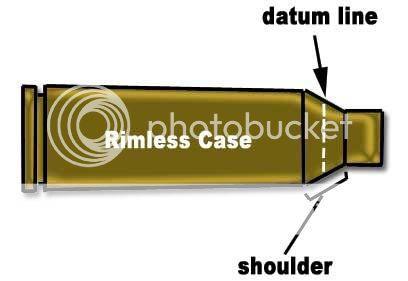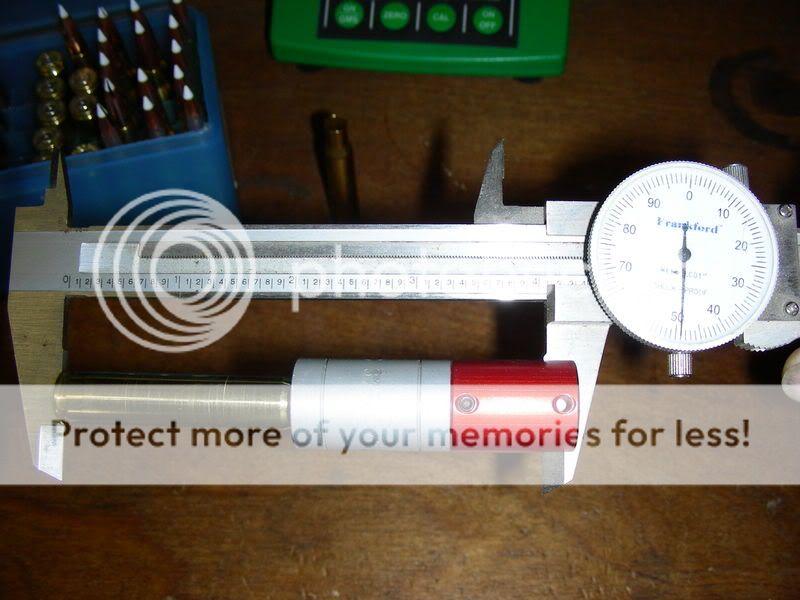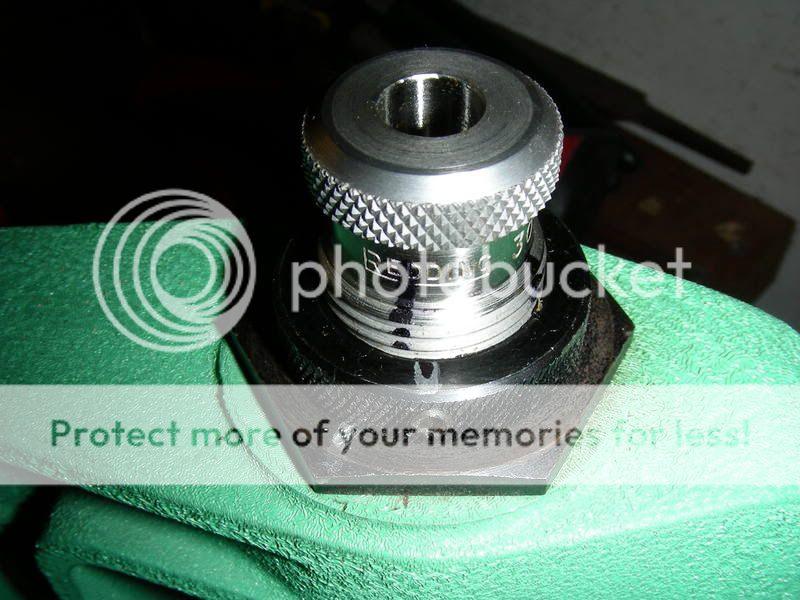I tried the once fired brass in my chamber unsized and the bolt was stiff to shut so I will back my die up until they fit good right?
No, backing the die up will not relieve the crush fit.
The explanation is a bit complicated but let's go through it because if you understand the entire concept then it becomes easier to make adjustments to the process.
A new case is undersized by a good amount. By that I mean that the cases are made to fit in any rifle in that particular chamber and they have to be made smaller than the smallest possible chamber out there. There are several ways to measure the amount of expansion. I use a Hornady Headspace gauge
Hornady Lock-N-Load Headspace Gage 5 Bushing Set with Comparator - MidwayUSA
that measures from the case head to a point on the shoulder close to the datum line
This is a set of typical measurements on a 30-06 I have:
New case - 2.040"
Once fired - 2.0485" (no crush fit, neck size only)
Twice fired - 2.050" (no crush fit, neck size only)
3 times fired - 2.051" (slight crush fit, neck size only)
4 times fired - 2.0515" (crush fit, neck size, body size and push the shoulder back)
Now if I push the shoulder back .001" or so for a very slight crush fit then most will call that Partial Full Length Resizing.
The Point is that in order to have 100% consistant case dimensions, you have to fire the case enough to get it fully expanded. Before that, it is in flux unless you size to set the shoulder back to once fired position everytime which in the above example would be pushing the shoulder back .003" everytime.
There is a caveat to this and it will come out in the explanation of die adjustment. The instructions for most Full Length Dies like RCBS say to adjust your die for full length as follows:
1. Raise the ram in the press and adjust the die down until the bottom of the die contacts the shell holder
2. Lower the ram and adjust the die DOWN AN ADDITION 1/8 TO 1/4
What happens when you raise a case up into the dies when it is adjusted to Full Length size is:
1. The die first contacts the case at the pressure ring just above the case head
2. When it starts sizing at the pressure ring, it squeezes the case like a balloon and it will PUSH THE SHOULDER FORWARD
3. The die continues sizing more and more of the case body until it die shoulder hits the case shoulder and begins to push it back
You can follow this process without gauges by setting your rifle up on the bench and chambering the case as you go through the sizing process. If you set your die to contact the shell holder and BACKED IT BACK UP about 1/2 to 3/4 turn, that is where the die first starts contacting the pressure ring. The case shoulder will be pushed forward, but in once fired or even twice fired it may not push the shoulder forward enough to cause a crush fit in your chamber. How much it pushes the case shoulder forward will depend upon how much the case body is being squeezed at the pressure ring which will be dependant upon the interior dimension of the die and your chamber.
If you start to get a crush fit at 1/2 turn up, then start adjusting your die down in 1/4 turns, chambering the case after each sizing. You will notice the crush fit get worse and worse. Typically the crush fit will be the worst at the point where the bottom of the die contacts the shell holder. Once you go past that point adjusting the die down (go in very small increments as each small adjustment is moving the die down a few thousanths of an inch at a time), you will get to the point where the die contacts the shoulder, starts to push it back and relieves the crush fit.
It helps to put witness marks on the die (Redding Body Die shown here)
Your rifle is the ultimate gauge. You will work your case the least and get the best case life if you keep the case shoulder in contact or very very close to contact with chamber shoulder.
 Help Support Long Range Hunting Forum
Help Support Long Range Hunting Forum


